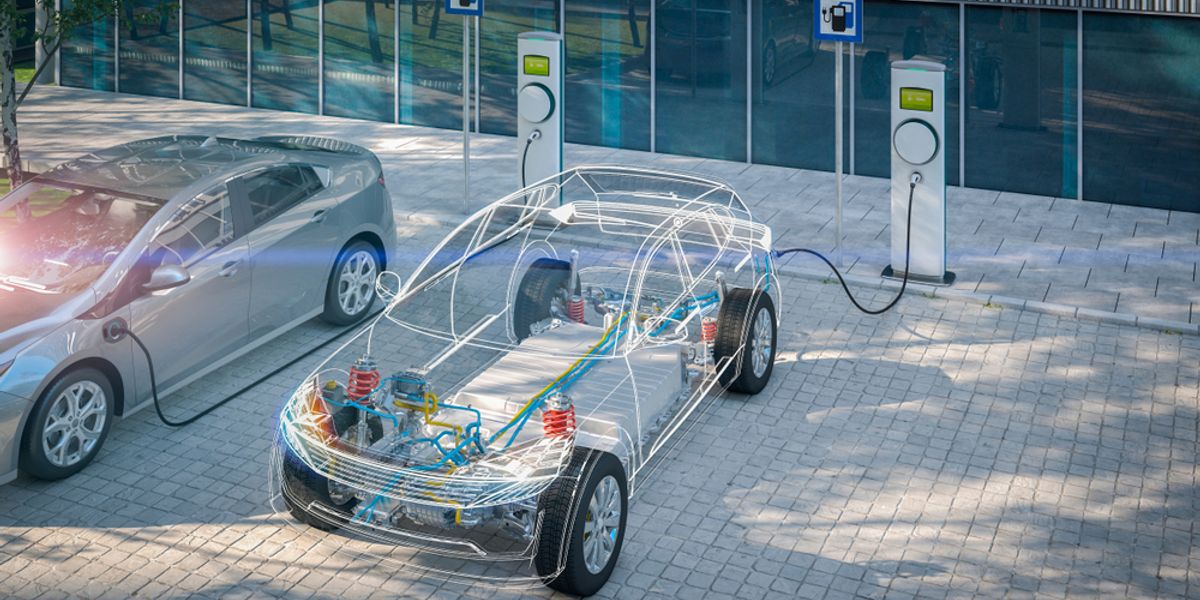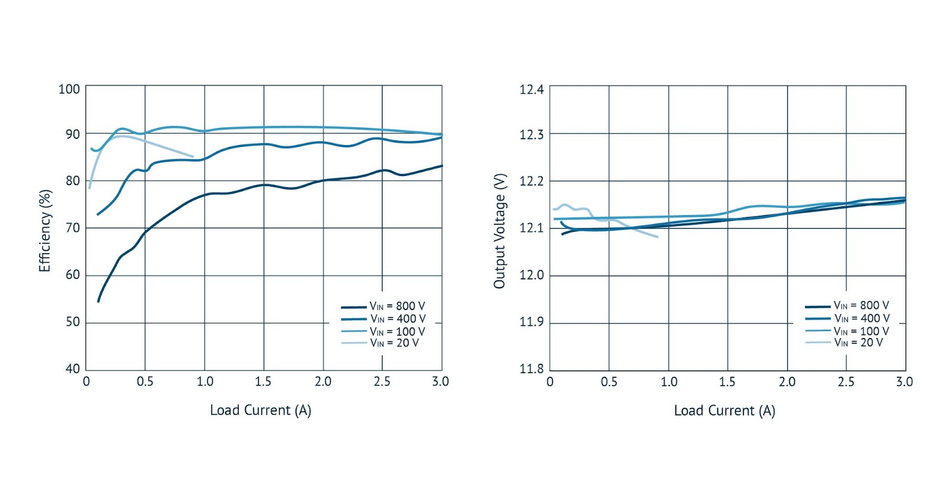Finding the Sweet Spot for Flyback Converters in Electric Vehicles

Article #1 of Power Management for Tomorrow’s Innovations Series: Optimizing the power converter and battery management system designs can solve the challenges associated with present-gen electric vehicles like short traveling ranges and high costs.
This is the first article in an 8-part series featuring articles on Power Management for Tomorrow’s Innovations. The series focuses on power management and optimization techniques for modern electronic systems. This series is sponsored by Mouser Electronics. Through the sponsorship, Mouser Electronics shares its passion for technologies that enable smarter and connected applications.
Even with advances in battery technology and electromechanics, Original Equipment Manufacturers (OEMs) struggle to meet the mix of expectations related to electric vehicles that include ultra-low emissions, vehicle performance, vehicle range, and consumer affordability. Innovations in isolation, power management, magnetics, sensing, and Battery Management Systems (BMS) can help OEMs meet these expectations.
In this article, we look at some design techniques for efficient power management in EVs; with systematic planning and innovative power electronic solutions, manufacturers can build significantly better vehicular electric power systems.
Technological Innovations Lifting the Last Hurdles to EV Mass Adoption
Two significant disruptions are currently affecting the future of vehicular transport and semiconductor technology.
The first is shifting from the Internal Combustion Engine (ICE) to the electric motor drive.
The second is the emergence of power switches employed in motor drive systems based on wide bandgap (WBG) material. These devices offer figures of merit around 10 times better than the incumbent solution based on silicon.
However, with the battery accounting for more than 25% of the final vehicle cost, optimization of energy use is one of the keys to achieving mass EV adoption. Reaching this goal means recognizing that every watt (W) spent is critical and prioritizing subsystem efficiency as a primary selection criterion in automotive system design.
Recent advancements in power management for the powertrain including isolated gate drivers, sensing, and BMS allow designers to be creative to improve system efficiency while keeping the system cost under control. Fig. 1 shows the different components of a modern EV powertrain.

Power Management Techniques for EV Powertrain
On the road toward the highest performance, every watt of power matters whether the EV is in “on,” “standby,” or “sleep” mode. Cutting-edge power management solutions can further increase vehicle efficiency, which correlates to extra miles while not compromising the best Electromagnetic Compatibility (EMC) performance from low-current/low-voltage to high-current/high-voltage applications.
Design Challenges in High Voltage Flyback Circuits
In functionally safe systems, continuity of voltage supply is critical. Generating a local low-voltage rail from the high-voltage battery plays a key role. In traditional isolated high voltage flyback converters, tight regulation is achieved using optocouplers to transfer regulation information from the secondary-side reference circuitry to the primary side.
The problem with this approach is that optocouplers add significant complexity to isolated designs. Optocouplers introduce propagation delay, aging, and gain variation. All these factors complicate power supply loop compensation and can reduce reliability.
Moreover, during start-up, either a bleeder resistor or high voltage start-up circuit is required to power up the Integrated Circuits (IC) initially. Unless an additional high voltage Metal-Oxide-Semiconductor Field-Effect Transistor (MOSFET) gets added to the start-up components, the bleeder resistor is a source of unwelcome power loss.
Avoiding the use of Optocoupler
By sampling the isolated output voltage from the third winding (of the transformer), no optocoupler needs to be employed for regulation. The output voltage gets programmed with two external resistors and a third optional temperature compensation resistor.
Boundary mode operation helps to achieve excellent load regulation. Because the output voltage gets sensed when the secondary current is almost zero, no external load compensating resistors and capacitors are needed. As a result, the solution has a low component count, greatly simplifying the design of an isolated flyback converter.
Start-Up Optimization
There is no need for an external bleeder resistor or other start-up components with an internal depletion-mode MOSFET (which has a negative threshold voltage and usually is on). Once a local 12V capacitor gets charged, the depletion-mode MOSFET turns off to reduce power loss.
Ultra Low Quiescent Current
Designers should implement mechanisms to achieve ultra low quiescent current. The switching frequency should be reduced at light load while keeping the minimum current limit to reduce current while properly sampling the output voltage.
For example, in standby mode, in implementing a sixteen times (16x) reduction of its switching frequency (3.5kHz–220kHz) and keeping the preload current at less than 0.1% of total output power, the LT8316 by Analog Devices has demonstrated a quiescent current lower than 100µA.
Sensors and Power Converters by Analog Devices Address Design Challenges in EV powertrain
Analog Devices’ products address EV design challenges by offering superior battery sensing, the highest level of automotive safety, the broadest portfolio of EV BMS devices, and the most innovative, and versatile system-level solutions.
Analog Devices LT8316 Micropower Isolated Flyback Converters
The LT8316 converters sample output voltage from isolated flyback waveforms that appear on third-winding transformers. The component is rated to operate up to 600VIN. This range can be extended by placing a Zener diode in series with the VIN pin to improve the solution scalability. The voltage drop across the Zener diode reduces the voltage applied to the chip, allowing the supply voltage to exceed 600V.

With the 220 V Zener diode placed in series with the VIN pin, the minimum supply voltage for the start-up is 260V, give or take, considering the voltage tolerance of the Zener diode. After start-up, the LT8316 operates normally with a supply voltage below 260V. This part achieves high peak efficiencies as shown in fig. 3(a). Even with no optocoupler, load regulation at different input voltages remains tight as in fig. 3(b).

Conclusion
There are multiple opportunities available for power and cost savings in an EV powertrain as the power flows from the charging station to the battery and from the battery to the motor. Eliminating redundant components in driver circuits, optimizing the switching schemes, and carefully selecting modules are just some examples of ways to save power we discussed in this article. By implementing such strategic improvements to the design, EVs are all set to become mainstream.
This article is based on an e-book by Mouser and Analog Devices. It has been substantially edited by the Wevolver team and Electrical Engineer Ravi Y Rao. It's the first article from the Power Management for Tomorrow’s Innovations Series. Future articles will introduce readers to some more power management and optimization techniques for modern electronic systems.
The introductory article covered the fundamentals of power electronics, the technology behind highly-efficient power conversion in different electrical/electronic systems.
The first article shares some design techniques for efficient power management in EVs. It covers how manufacturers can build significantly better vehicular electric power systems with systematic planning and innovative power electronic solutions.
The second article introduced readers to silent switching and how it prevents EMI at the source, rather than adding shields and filters to the product later.
The third article describes current measurement techniques using LTC297x series components by Analog Devices. It presents some application circuits and compares different approaches for current sensing in power electronic converters.
The fourth article discussed the problems associated with phase noise and experimentally showcased how power supply designs can be optimized to deal with them.
The fifth article featured Single-Inductor Multiple-Output architecture that integrates different power supply functionalities to drastically reduce the overall size and costs for wearables.
The sixth article describes how vehicular asset-tracking devices are powered with small, efficient power solutions and protected from electrical stresses.
The seventh article explains how designers can implement and validate proven power supply circuits for enabling the reliable operation of healthcare devices.
The final article dealt with a specific IoT power management solution for small, and portable gadgets. It showcases a nano-Power boost converter that ‘operates on fumes’ to make the most out of all the available energy.
About the sponsor: Mouser Electronics
Mouser Electronics is a worldwide leading authorized distributor of semiconductors and electronic components for over 1,100 manufacturer brands. They specialize in the rapid introduction of new products and technologies for design engineers and buyers. Their extensive product offering includes semiconductors, interconnects, passives, and electromechanical components.
References
[1] Timothe Rossignol, Brian O’Mara, Kate O’Riordan, Guilhem Azzano, Maurizio Granato, Sarven Ipek, and Wei Gu, ‘Find the Cost and Performance Sweet Spot for Battery Management and Traction Inverter Systems Design’, Analog Devices - Mouser, [Online], Available from: https://www.mouser.com/pdfDocs/sweet-spot-for-bms-and-traction-inverter-systems.pdf, https://www.analog.com/en/technical-articles/sweet-spot-for-bms-and-traction-inverter-systems.html
[2] Analog Devices Inc. LT8316 Micropower Isolated Flyback Converters, Mouser Electronics, [Online], Available from: https://www.mouser.com/new/analog-devices/adi-lt8316-flyback-converters/




